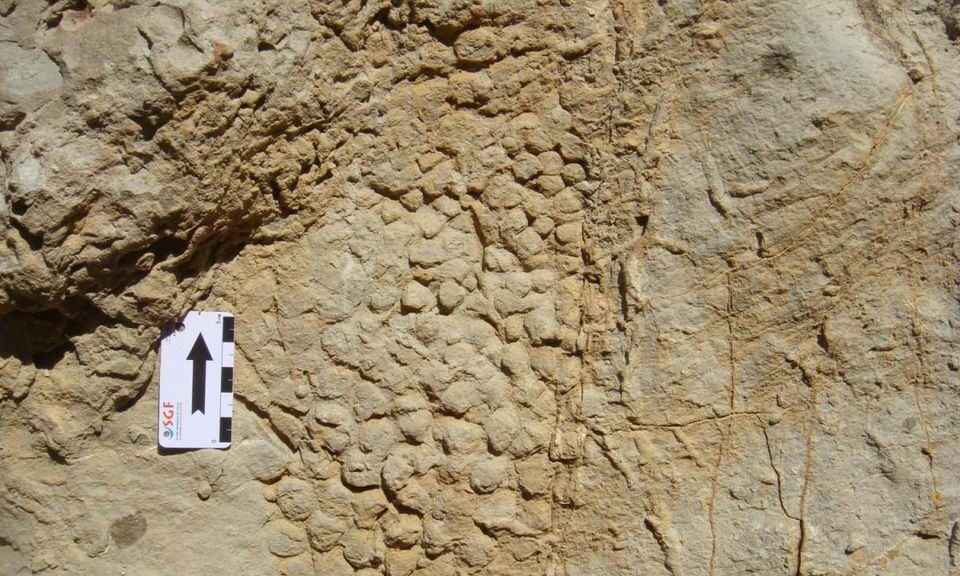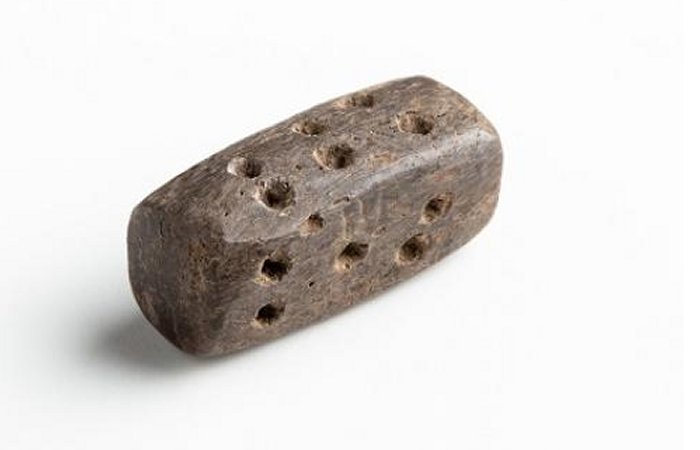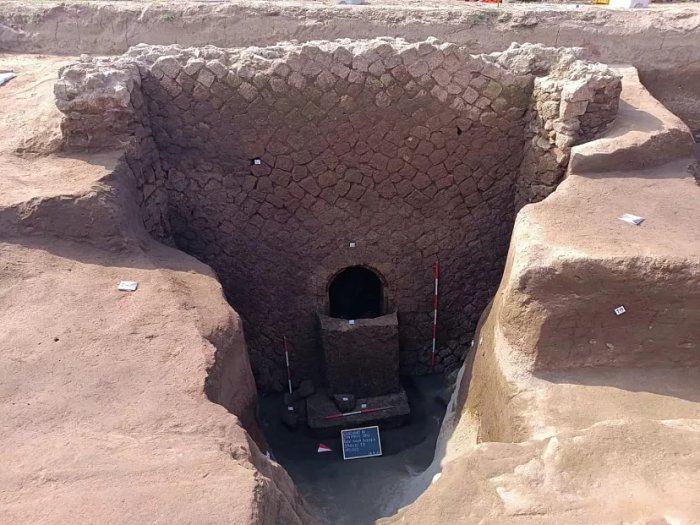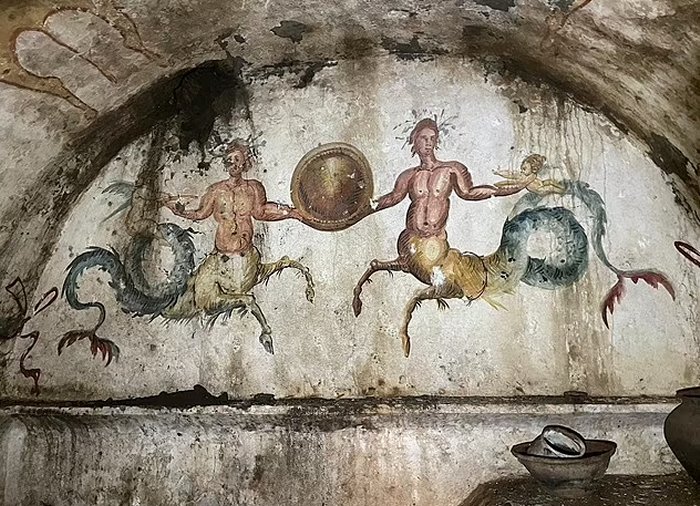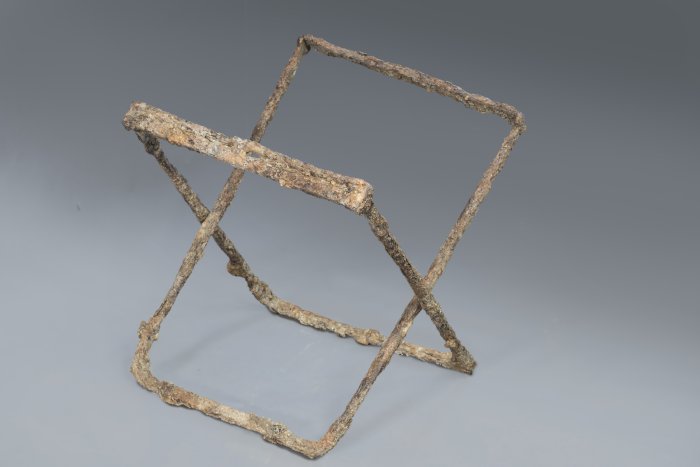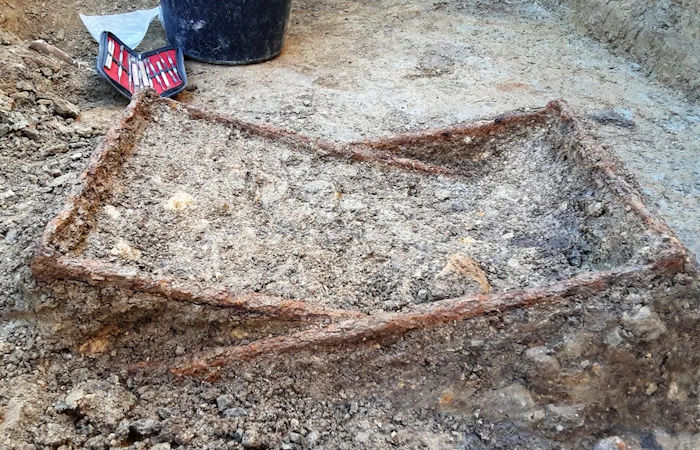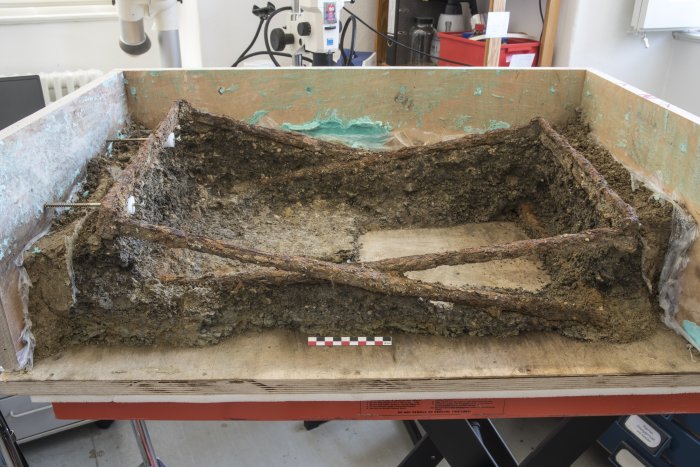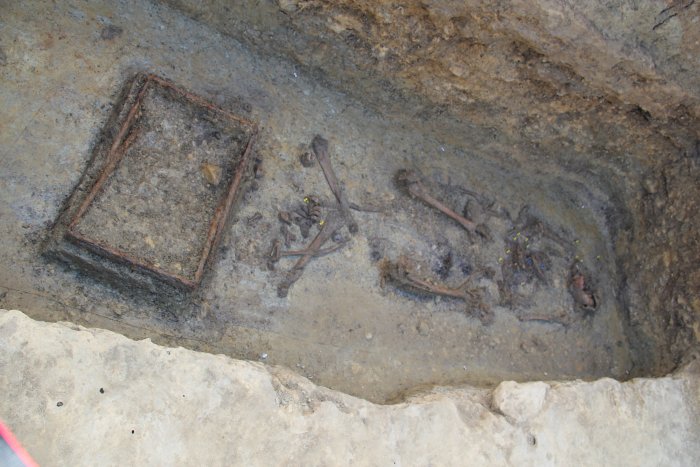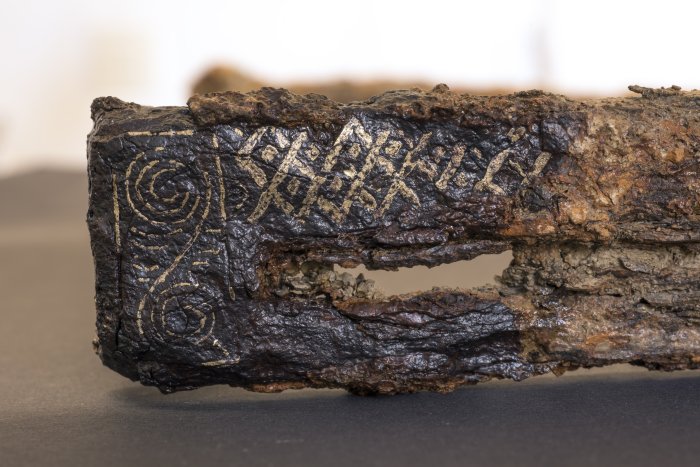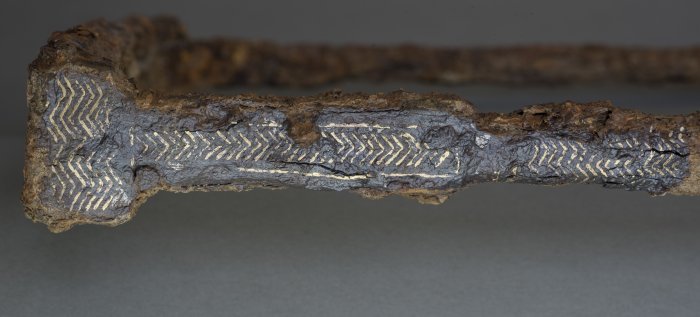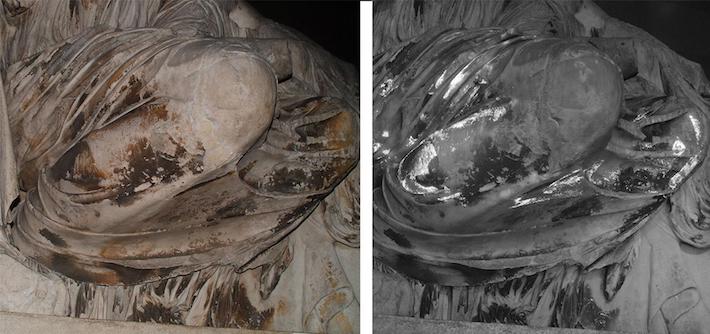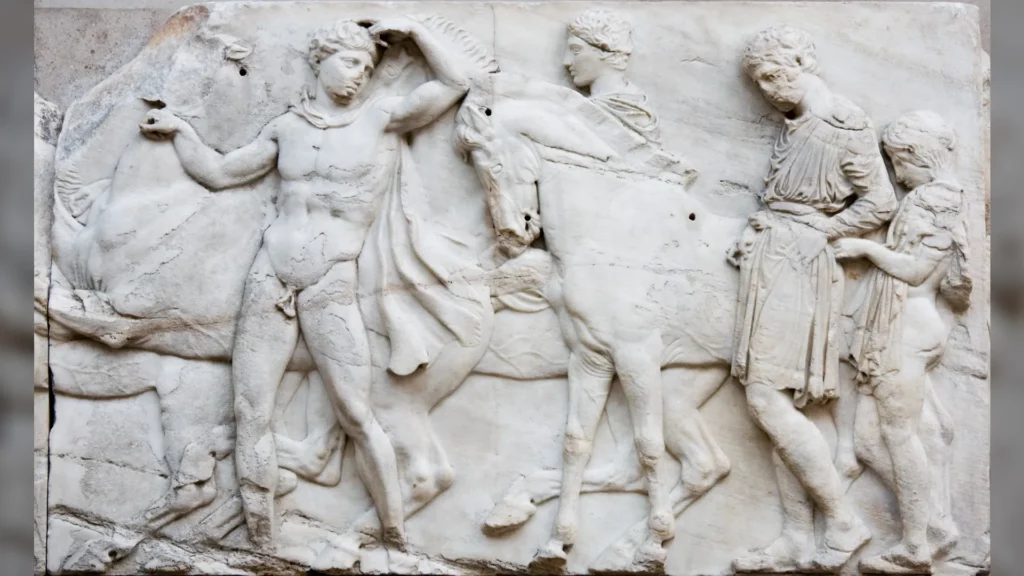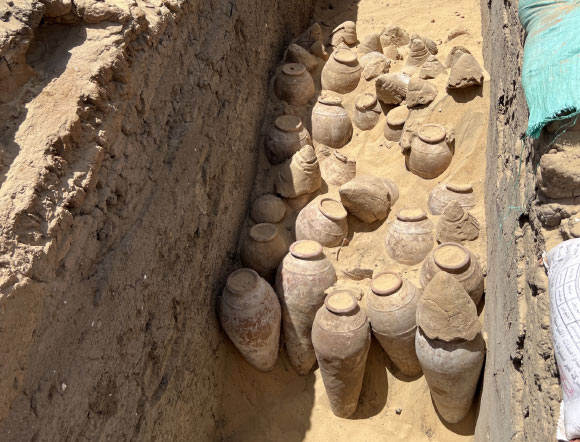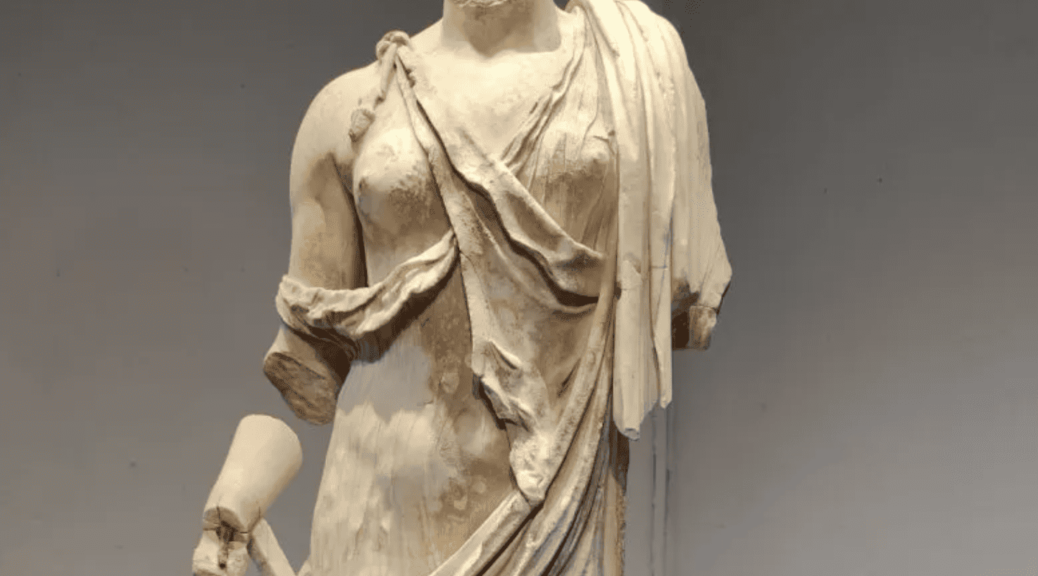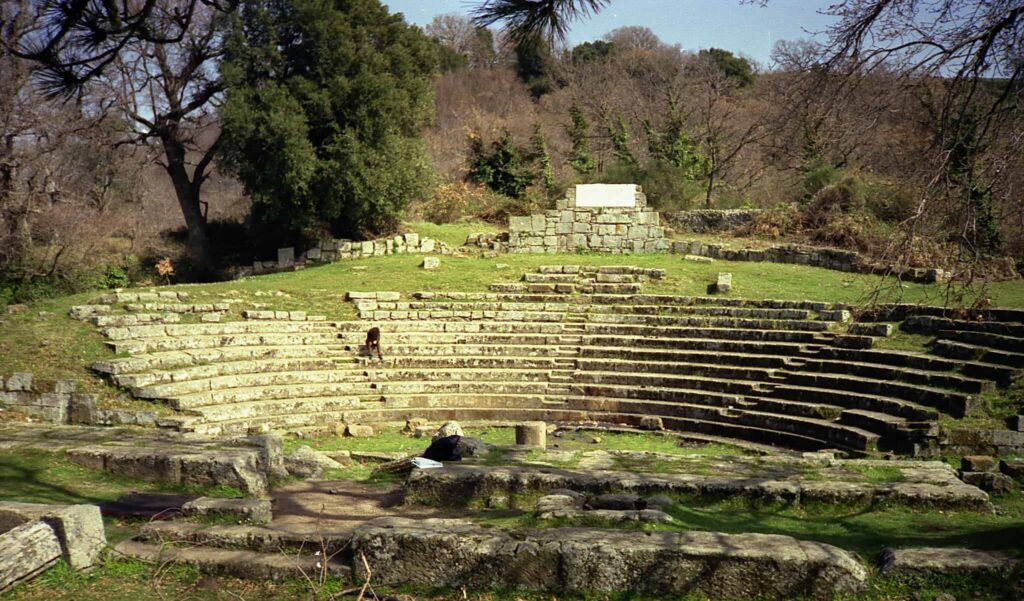66-Million-Year-Old Dinosaur Skin Impression Discovered In Spain
In Spain, detailed skin impressions of a giant dinosaur discovered 66 million years ago in a muddy riverbank have been discovered. The fossil was created over centuries by sand petrifying into sedimentary rock, and it clearly shows the pattern of massive scales that once lined the creature’s hide.

The prints are thought to have been left by a titanosaur that lived during the Late Cretaceous period, just before dinosaurs went extinct.
‘This is the only registry of dinosaur skin from this period in all of Europe, and it corresponds to one of the most recent specimens, closer to the extinction event, in all of the world,’ said lead researcher Victor Fodevilla, from the Autonomous University of Barcelona.
‘There are very few samples of fossilized skin registered, and the only sites with similar characteristics can be found in the United States and Asia.’
Instead, the team envisions the creature that made the impressions with a huge four-footed sauropod, possibly a titanosaurus – one of the biggest animals ever to walk the Earth.
And researchers found footprints near the site that support the titanosaur theory.
‘The fossil probably belongs to a large herbivore sauropod, maybe a titanosaur, since we discovered footprints from the same species very close to the rock with the skin fossil,’ said Fodevilla.

The discovery was made in the village of Vallcebre, near Barcelona, in an area that was once the bank of an ancient river. It is thought the dinosaur left an imprint of its scales when it laid down in the mud to rest. Over time, the region where the animal left its prints was eventually covered with sand.
And over the course of thousands of years, the area petrified to form sandstone, preserving the astonishing impressions recently discovered by the researchers.
Since the sand acted as a mold, what is seen on the rock is a relief of the animal’s original skin.
How the process happened is unique, as the Late Cretaceous period corresponds to the moment shortly before dinosaurs became extinct, there are few places on Earth containing sandstone from this period.
Characterizing these dinosaurs is very important in order to understand how and why they disappeared.
Two skin impressions were found, one about 20 centimeters across and the other five centimeters, separated by a distance of 1.5 meters.
And experts believe they were made by the same animal.
The ‘rose’ pattern of the scales is characteristic of certain dinosaurs, said the researchers, who describe their find in the journal Geological Magazine.
‘The fact that they are impression fossils is evidence that the animal is from the sedimentary rock period, one of the last dinosaurs to live on the planet,’ said Fondevilla.
‘When bones are discovered, dating is more complicated because they could have moved from the original sediment during all these millions of years.’
This discovery also verifies the excellent fossil registry of the Pyrenees in terms of dinosaurs living in Europe shortly before they became extinct.
‘The sites in Berguedà, Pallars Jussà, Alt Urgell and La Noguera, in Catalonia, have provided proof of five different groups of: titanosaurs, ankylosaurids, theropods, hadrosaurs and rhabdodontids,’ said Àngel Galobart, head of the Mesozoic research group at the ICP and director of the Museum of Conca Dellà in Isona.
‘The sites in the Pyrenees are very relevant from a scientific point of view, since they allow us to study the cause of their extinction in a geographic point far away from the impact of the meteorite.’
